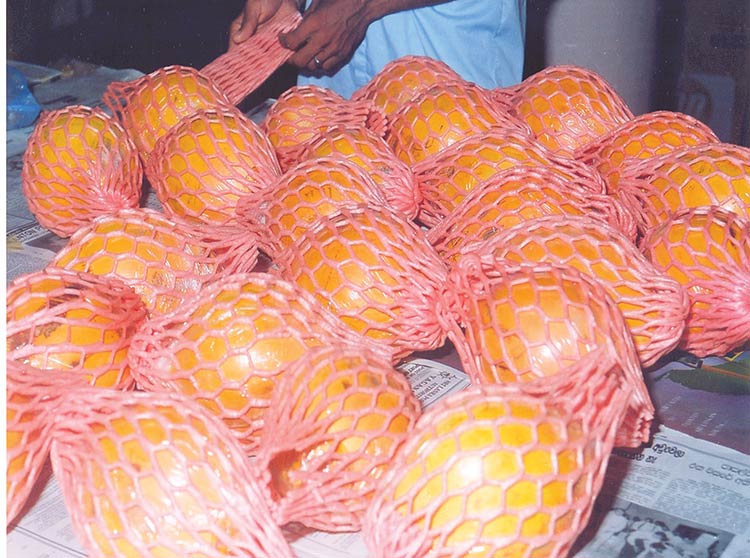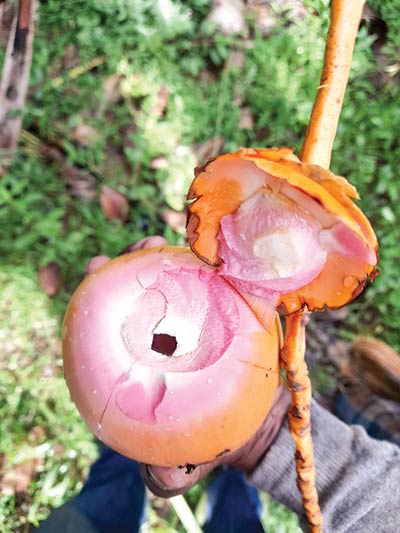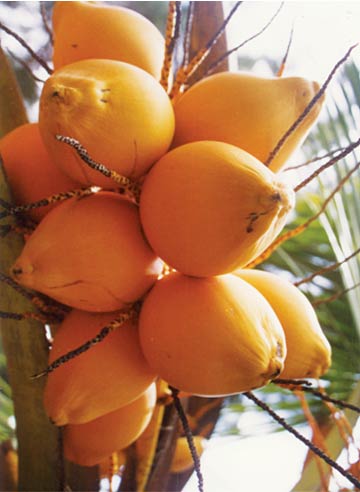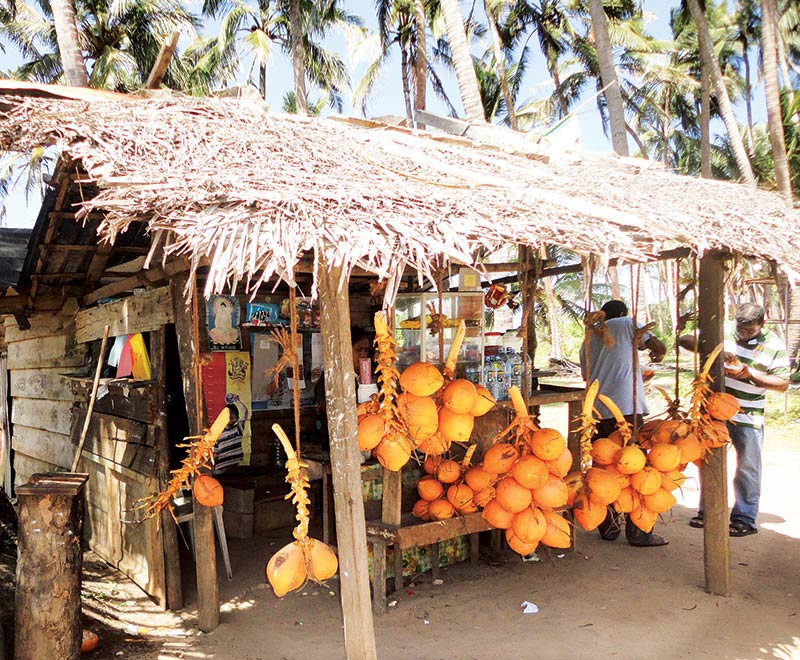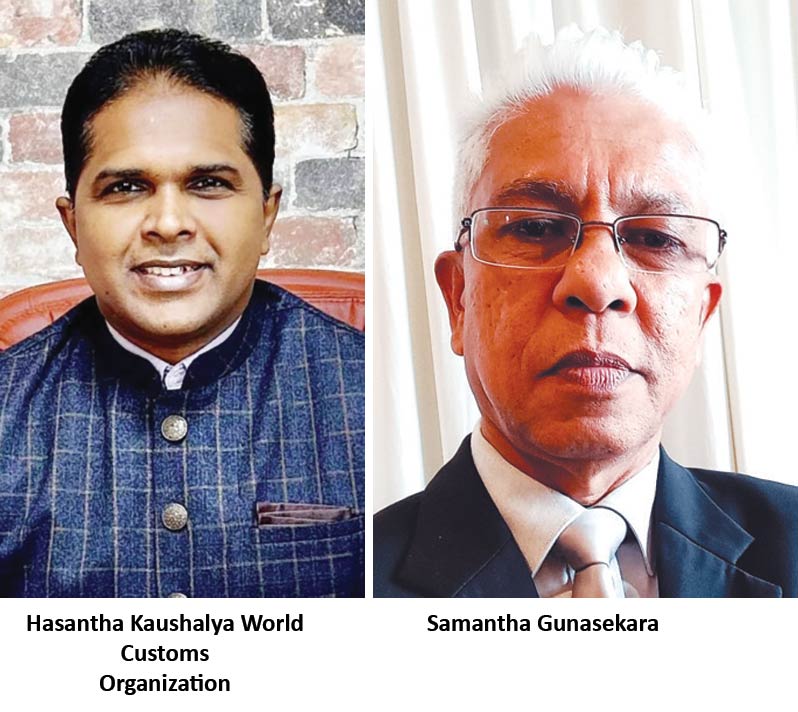Life style
Stigma associated with mental health contribute to suicide ?

Fathima Amra Ali Anwer Bsc. (Hons) in Psychology (UK) Msc. In Clinical and Health Psychology (University of West London, UK) Trainee EMDR Therapist serves as the Consultant Psychologist at the Civil Society Organization, Child Protection Force, in Sri Lanka. With a robust academic background and extensive practical experience, she specializes in providing pyschological support to children, adolescents, and adults. Her expertise encompasses a range of therapeutic techniques, with a focus on clinical and health psychology. Her work is characterized by compassionate approach and a commitment to fostering resilience and healing in individuals affected by trauma and adverse experiences.
(Q) What’s behind the suicides of Sri Lankan teenagers?
In the past few weeks, this topic has been widely sensationalized and discussed. However, it has been a persistent issue in Sri Lanka for a much longer time. The escalating number of suicides among Sri Lankan teenagers can be attributed to a complex blend of factors. Some of them include long-standing social stigma surrounding mental health, academic pressure, and bullying. In Sri Lanka, many children are subjected to unrealistic expectations by their families and are expected to excel academically which often leads to severe anxiety and stress.
Secondly, the stigma associated with mental health problems also contribute immensely towards the emerging epidemic in Sri Lanka. Many young people are discouraged from seeking help because of the fear of being labelled and viewed negatively by society. At a nationwide level there is an urgent need for increased awareness as well as education about mental health along with better availability of mental health services. Also, creating a more supportive environment for the young people in schools and communities can help them feel safe enough to share their thoughts, fears, and anything concerning them as well as asking for help when needed.
Notably also, there is the role of social media and cyberbullying. Many teenagers are subjected to online bullying that results in severe psychological effects on them. Parents, teachers, policymakers and mental health advocates should work together to address these concerns with a multifaceted approach. This way we can start reducing the factors behind this trend and give our adolescents’ the necessary tools and resilience to navigate their challenges.
(Q) Identifying of risk factors?
Preventing suicidal acts requires the identification of risk factors and recognizing those risk factors can enable us to identify victims who require immediate intervention. These may include a past history of mental health problems such as major depressive disorder, generalized anxiety disorder or bipolar disorder. The effects of these conditions which are likely to have an effect in their lives greatly hinder them from tackling stressful situations and also increases the risk of suicidal thoughts. Secondly, certain age groups are also thought to be at higher risk due to various challenges that they undergo during their lives. These age groups include teenagers, as well as individuals over the age of 45. Also, teenagers are more predisposed to commit suicides if they have a family history that includes suicidal actions or mental illness. Moreover, trauma like physical abuse, emotional abuse, sexual abuse and neglect is another major or risk factor this is because it causes feelings of worthlessness and low mood. Another crucial factor is substance dependence such as alcoholism or drug addiction whereby it impairs judgment hence making it more likely for someone to act on their suicidal thoughts. Finally, there are several other factors which could trigger suicidal thoughts for instance; family issues, financial issues, death of a loved one, relationship issues, lack of a support system, having an organzied plan for suicide among other culminating into suicidal decision-making processes. Therefore, early detection of these risk factors coupled with timely support through resources can save many lives.
(Q) Is mental health issues a risk factor for suicide?
Mental health issues, as discussed before, is one of the most significant risk factors for suicide. Conditions such as depression, bipolar disorder and anxiety disorders can result in intense feelings of hopelessness, despair or worthlessness. These emotions may lead individuals to see no other way out of their suffering and resort to more extreme measures to escape their agony. Also, mental illness impairs judgment and decision-making hence making it difficult for persons to adopt healthy coping mechanisms. People with mental illness often struggle to cope with daily stressors and challenges, which puts them at a higher risk for suicidal thoughts if they feel trapped by their pain. These individuals may resort to unproductive and maladaptive methods of coping such as alcohol, or substance use which may further perpetuate their issues. Therefore, it’s imperative that mental health issues are addressed using a more holistic approach, which may include therapy, medication, and support from family and friends.
Abuse, alcohol, addiction, chronic disease, family crisis loneliness, financial loss.
(Q) Can these issues contribute to increase of suicide in Sri Lanka ?
Suicide in Sri Lanka is often caused by a number of all these factors. The mental health of a person can be deeply affected by abuse, whether it is physical, emotional, or sexual and can cause someone going through these issues to contemplate suicide. Abuse, trauma and the scars it leaves on one’s emotions can leave them feeling helpless and trapped. It can cause someone to think about ways to end their suffering permanently. Additionally, substance abuse often starts when individuals try to cope with their emotional pain in maladaptive ways but this vicious cycle leads to worsening mental health conditions and addiction that increases the risk of suicide.
Moreover, family crises, such as domestic violence, severe financial problems, or parental separation, can create a stressful and unstable environment. This too could make an individual feel helpless and distressed. Furthermore, these issues end up being aggravated by feelings of loneliness and social isolation making young people find no way out of their distress. A teenager may lack someone to talk to, as well as improve his or her situation without a good supportive network around him. It’s a combination of these factors that can push someone to the brink.
(Q) Are suicides common among women or men?
First and Foremost, Sri Lanka continues to record a higher than global average rate of suicide. The figure shows that most suicides in Sri Lanka occur among men. This could be explained by the fact that men usually go for more lethal methods. However, women tend to try to commit suicide more often but with less lethal means. Societal norms and expectations may contribute to this gender disparity by making it unacceptable for men to show vulnerability or seek assistance. Men are often expected to be tough and independent, which can cause reluctance in sharing their burdens when they need help. In contrast, women might be more willing to ask for support or talk about their feelings, sometimes leading to early intervention and assistance before it is too late.
(Q) Sri Lanka highest suicide rates, most common reasons are personal — love affairs, domestic issues and family issues — comment?
Yes, there are a number of personal relationships and domestic issues that trigger the act of committing suicide in Sri Lanka as well. Love affairs, especially those ending badly, cause very intense emotional pain and rejection. The identity and self-esteem of many youths is often built around these relationships hence once the relationship fails they may lose all hope of ever having a normal life again. Family issues such as domestic conflicts, parental conflict, and high expectations can make one’s home a stressful place where one cannot wait to run away from. If a society is one where family and social standing are placed on a high pedestal, these issues can make them feel ashamed and inadequate. The pressure to conform to societal expectations and the stigma around seeking help for personal problems make it even harder for individuals to find support. This combination of personal and relational stressors can feel overwhelming, leading some to see suicide as their only escape.
(Q) How do you actually help a suicide teen?
The first step in helping a teenager who contemplates suicide is to create an environment that is safe and without judgment for the teenager. Active listening is important. The most significant aspect of it all is letting them know that they have support from people around them; encouraging them to seek professional help from psychologists and other mental health professionals who can provide the appropriate support and intervention. As psychologists, it is important to involve their family and close friends to build a strong support network. Help comes in many forms including giving information about helplines or connecting with groups that will offer necessary support. What I often do with my clients is also educate them on adaptive coping mechanisms as well as encouraging them to do activities which bring them joy and satisfaction which in turn can help them find hope and purpose. Above all, showing them that they are not alone and that there is hope can be incredibly powerful.
(Q) Are we comparatively low in suicide rates in comparison to other countries?
It is worth noting that the present suicide rate of Sri Lanka population is significantly less than it was in 1990s. However, Sri Lanka still has one of the highest suicide rates globally. This high rate is due to a combination of several factors discussed earlier, including mental health issues, bullying, substance abuse and family crises, and society-related pressures. Community awareness campaigns have been initiated to address this problem but there is still a long way to go in terms of prevention through mental health programs. Comparing our rates to those from other countries demonstrates the need for more robust mental health services and societal support system.
(Q) How do you stay motivated as a therapist working with these complex issues?
Staying motivated in this field requires a deep commitment to helping others and a passion for making a difference. As a person who mainly deals with victims of abuse and domestic violence, I come across extreme situations in my work which at first affected my mental wellbeing greatly, but we learn how to separate our personal lives from work as time passes by. Moreover, seeing even small improvements in my clients’ lives is incredibly rewarding and brings me great satisfaction. Self-care is essential, too – I make sure to take time for activities that rejuvenate me, like spending time with loved ones, pursuing hobbies such as painting, and continuing my own education. Staying connected with other professionals in the field such as my supervisors for support and advice also helps me stay grounded and motivated.
(Q) How would you describe alternatives to suicide?
Alternatives to suicide include Cognitive Behavior Therapy (CBT) help individuals acquire adaptive ways of dealing with issues and work through their concerns in a supportive environment. It is important to have a strong support system: friends, family, or support groups play a crucial role in this regard. We always advise our clients to get involved in activities that make them happy— be it sports, art, music, or any other hobby because such engagements can bring about a sense of purpose and keep them distracted from negative thoughts while also enjoyable Adopting healthy coping strategies— for example mindfulness, meditation, or physical exercise— goes a long way in stress management. Sometimes finding creative outlets like writing, art or music may act as an alternative form of expression and help deal with emotions in a therapeutic way as well.
(Q) As a psychologist how will you deal with a boy or girl with suicidal tendencies?
My approach involves establishing trust, opening a free and non-judgmental space for them, where they can openly express their thoughts and feelings without fear of judgment. I determine the risk level through direct questions on various aspects of their suicidal ideation such as thoughts, plans, and means. Based on this assessment, I create a tailored intervention plan involving their family and social network. The underlying causes need to be addressed — whether they stem from mental health, family ties, or societal pressures. Regular follow-ups and continuous support are essential to ensure they stay on a path to recovery.
(Q) Why do you think its important for people struggling with suicidality to have access to peer support?
When facing suicidality, peer support plays an essential role because it helps foster a sense of connection and understanding. Sharing stories with others who have walked similar paths can inspire hope — as well as provide practical coping mechanisms. It fosters an environment where those experiencing with mental health challenges do not feel alone or alienated but encourages them to reach out for assistance. Peer support also nurtures a sense of community and belonging which goes far beyond emotional recovery— it is just as important. By creating this empathy-based support system, the peer support complements professional treatment by offering empathy and lived experiences that can be incredibly reassuring and motivating for those in crisis.
Life style
King of coconuts heads for a golden future
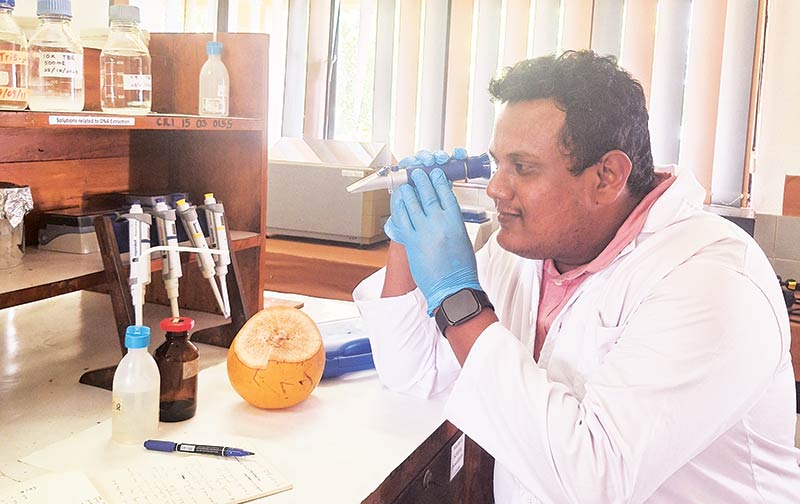
Characterized by its golden exterior, Sri Lankan King coconut or thambili is endemic to the island. In a bid to tap a premium global niche market for this golden nut which traditionally equaled the modern-day saline, the Coconut Research Institute has embarked on ambitious research which is promised to be a ticket in obtaining Geographical Indication (GI) Certification for the much-loved thirst quencher.
BY RANDIMA ATTYGALLE
Traditionally in Sri Lanka, a guest is welcomed with a tall glass of refreshing thambili water. A popular pre-lunch drink, thambili translating to ‘king coconut’ befits this golden-hued nut endemic to Sri Lanka. Thambili is an integral part of many Lankan lives. From being an organic thirst-quencher to a notable base of ayurvedic medicines, this king of nuts even occupies the pride of place in religious and cultural landscape of the island.
Bunches of thambili are often used for decorative purposes at traditional cultural festivals. Naturally sterile, thambili water had been a trusted antidote of native physicians since time immemorial. A traditional substitute for modern day life-saving saline, a bottle of thambili water or even a bunch of thambili was often taken by locals when visiting a recovering patient. Its jelly-like kernel commonly called londha is another edible delight.
Endemic variety
“In many coconut-growing countries, there are primarily two types of coconut palms: Tall and dwarf. Only a few countries have recorded intermediate types, and Sri Lanka has one such variety called Aurantiaca, which means orange coloured in Latin. Within this variety, there are four types of coconut, including king coconut – Nawasi Thambili, Rathran Thambili, and Bothal Thambili. King Coconut is considered endemic to Sri Lanka. Although populations with a similar appearance have been recorded in other countries, they belong to the red dwarf variety. Only Sri Lanka has a well-distributed population of king coconut,” says Dr. Auchithya Dissanyaka, Head of the Genetics Implant Division of the Coconut Research Institute of Sri Lanka (CRI).
GI for a premium price
In a backdrop where the demand for thambili or Sri Lankan king coconut in the international market is on the rise, the CRI is now in the process of differentiating the other dwarf varieties from the Sri Lankan king coconut. The effort is perceived to be a gateway in obtaining the Geographical Indication (GI) certification for our thambili.
GI is an international labeling system that identifies a product originating from a specific geographical area. It recognizes qualities, characteristics, or the product’s reputation that are importantly linked or attributable to its location. GI-certified products which have the international protection are also at an advantage of fetching a premium price over non-GI competitos. Sri Lanka obtained its first-ever GI certification in 2022 for ‘Ceylon Cinnamon’ from the European Union.
Booming beverage industry
Our king coconut is mainly exported as whole nuts and bottled/canned coconut water. From only 2.96 million nuts in 2014, local king coconut exports have risen to 12.91 million nuts as of 2023. The natural beverage industry is also booming in the international market, creating a high potential for the coconut water industry to become a high-value export industry. In 2022, the coconut water market was worth USD 5.2 billion, and it is estimated to increase to USD 20.24 billion by 2030 (zionmarketresearch.com).
“While other coconut water exporting countries use water from either tall or dwarf varieties, Sri Lanka has a unique opportunity to compete in the international market with its indigenous king coconut variety which is of intermediate type. Brazilian Green Dwarfs and Aromatic Green Dwarfs from Thailand are two main coconut varieties in the beverage coconut industry. To successfully compete in the international market, it is crucial to distinguish king coconut from other varieties in the global market,” remarks Dr. Dissanayaka.
The scientists at the CRI are presently conducting molecular and biochemical studies for this purpose, she says. They are also in the process of collecting king coconut germplasm to establish a gene bank to conserve the genetic material of king coconut. “We are selecting best mother palms across the country to go for island-wide characterization and we are almost nearing completion. Following that, we are moving into specific characterization which will differentiate our king coconut from other varieties,” explains the scientist. The project is supported by connected institutions of the CRI including the Coconut Development Board and the Coconut Cultivation Board.
Ongoing research
In addition to the Morphological and Molecular diversity related researches on germplasm conservation which will generate information required to obtain GI, CRI’s king coconut research branches out to several other areas. “We are also carrying out nursery experiments to enhance effective seedling production, floral biology related researches to enhance the breeding programmes and mother palm collection to produce seedlings with good genetic potential,” explains Research Officer, Genetics and Plant Breeding Division of the CRI, Oshan Thilakarathne.
Sri Lankan king coconut is still largely confined to home gardens although several plantation companies have now come forward to expand the cultivation to plantation level. “The fact that our nuts are largely sourced from home gardens also render it to be fully organic – a factor which enables us to maintain a niche in the international market,” says Thilakarathne who goes onto cite its health properties. “It is a natural beverage high in minerals and is ideal as a sports drink today. In Ayurveda, king coconut water is used to treat renal and urinary tract related diseases.” King coconut water is also considered a dietary antioxidant.
Growing export market
Sri Lanka’s king coconut export market is growing and the possible GI Certification could take it to the next level, says CRI’s Senior Research Officer Nilmini Jayalath. “Ever since we started exporting from around 2010, our king coconut export volume has grown bigger and last year we exported 12.9 million nuts. Our leading buyers are the Middle Eastern countries, Singapore, Maldives, Japan, France, Switzerland, and Germany.” Although king coconut water is exported in value added forms such as in sachets, bottles and in cubes, the demand for ours as whole nuts is much bigger because in the international market, the demand for the natural form is intense,” says the Senior Research Officer.
The scarcity of nuts is one of the major challenges to reach the full potential of our king coconut exports remarks Jayalath. “Local consumption alone demands increased volumes and during the last dry season the nut price went up to Rs 200-250 in the local market. Therefore, to increase the availability of nuts, the Coconut Cultivation Board has initiated many schemes including king coconut villages,” notes the scientist.
Harnessing new technology
In addition to the king coconut characterization studies, the comprehensive research programme on king coconut includes the development of tissue culture technology, and strategies to mitigate the seasonality of production. “By addressing these aspects, CRI aims to not only boost yields but also ensure that the industry can meet growing consumer demand year-round,” says Dr. Nayanie Aratchige, Acting Director of the CRI.
The CRI has developed technology to increase the shelf life of young king coconuts, aiming at enhancing the export potential. The new technology developed by the CRI encompasses the largely untapped potential of king coconut trade due to challenges in preservation and transportation, offering solutions that enhance the shelf life and quality of nuts. “Preserving the freshness and nutritional value of king coconut during transit enables tapping distant markets without compromising quality. Producers and exporters can access further information and learn about our trainings by calling the CRI on the short code 1928,” Dr. Aratchige concludes.
(Pic credit- Coconut Research Institute, Wikipedia)
Life style
Stolen from the wild: Confronting the crisis of illegal wildlife trade and biopiracy

Nations Trust WNPS Monthly Lecture
By Samantha Gunasekara & Hasantha Kaushalya
Thursday, November 21, 6 pm, Lotus Hall, BMICH
The Wildlife and Nature Protection Society (WNPS) is committed to driving awareness and action on critical conservation issues. Through its monthly lecture series, WNPS brings to the forefront the often-overlooked crisis of illegal wildlife trade (IWT) and biopiracy—issues that threaten not only Sri Lanka’s biodiversity but the global ecological balance. The November edition of Nations Trust WNPS lecture aims to shed light on the dark underworld of wildlife trafficking, expose legal gaps, and highlight the need for collective action to protect natural heritage.
Illegal wildlife trade is a high-stakes, clandestine operation that generates up to $23 billion annually, fueled by complex networks that exploit animals, plants, and entire ecosystems. Despite global regulatory efforts like CITES, the trade continues to grow in sophistication, often outpacing enforcement. Sri Lanka’s unique wildlife, including endangered species like pangolins and star tortoises, is particularly vulnerable to collection, poaching and trafficking, with devastating impacts on ecosystems and biodiversity.
Illegal wildlife trade devastates biodiversity, but biopiracy—exploiting resources through patents—adds a serious, emerging threat. The shift toward Digital Sequence Information enables entire genomes of Sri Lanka’s unique species to be exploited, often without consent or awareness.
This month’s lecture presents a unique opportunity for the public and stakeholders to confront these alarming trends and to understand the role they can play in dismantling the networks that fuel IWT. WNPS invites all who care about wildlife conservation to join this critical session and take a stand against the exploitation of Sri Lanka’s natural resources.
This lecture features two of Sri Lanka’s leading experts on IWT:
Samantha Gunasekara
Samantha Gunasekara, former Deputy Director of Customs, is a leader in wildlife protection, credited with establishing World’s first customs Biodiversity protection cell and has over 30 years in wildlife crime detection and anti-corruption in wildlife crimes. He has led significant efforts in wildlife crime detection, initiated the Sri Lanka Customs Museum, and contributed to national conservation efforts. Recognized with the Presidential Environmental Award, he serves on multiple biodiversity committees and is a sought-after lecturer in conservation.
Hasantha Kaushalya
Hasantha Kaushalya is a prominent figure in counter-wildlife trafficking with over 15 years of experience at Sri Lanka Customs. As a World Customs Organization (WCO) accredited expert on Illegal Wildlife Trade (IWT), he has led technical missions and training workshops for Customs authorities across Asia and Africa. Known for his expertise in detecting and investigating cross-border wildlife crimes in Sri Lanka, Hasantha has also developed a comprehensive training program to strengthen wildlife trafficking enforcement within Customs. His achievements have earned him the 2023 WCO Certificate of Merit for knowledge-sharing and the Wildlife Law Enforcement Excellence Award from the Sri Lanka Wildlife Enforcement Network (SLaWEN)..
The lecture is supported by Nations Trust Bank and is open to both members and non members. Entrance Free.
Life style
Jetwing Hotels wins the Global Responsible Tourism Award
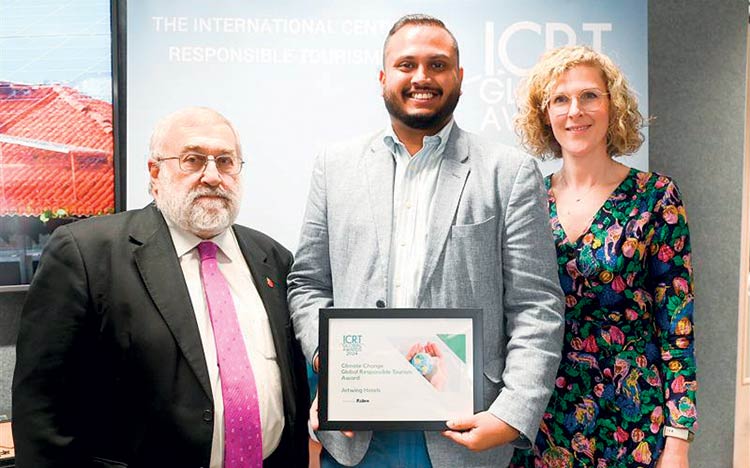
Jetwing Hotels was recently recognized for its contribution to climate action at the recently concluded Global Responsible Tourism Awards 2024, sponsored by Sabre, held in London.
The Global Responsible Tourism Awards has honored six exceptional tourism operators across various categories. These winners, hailing from Africa, Latin America, the Indian subcontinent, Southeast Asia, and the rest of the world, previously secured gold medals in their respective regional competitions. The 33 regional gold winners then advanced to the global stage, vying for recognition in the 20th anniversary year of the awards.
Harold Goodwin, founder of the International Centre for Responsible Tourism, emphasized the importance of concrete action in sustainable tourism. He stated, “Too often, ‘sustainable’ is used abstractly. Responsible Tourism demands tangible actions to improve tourism and transparent reporting of achievements. Today’s award winners exemplify these principles, offering evidence-based, replicable, and innovative approaches that inspire and influence others.”
Tess Longfield, Sabre’s head of sustainability communications and award sponsor, echoed this sentiment, expressing admiration for the finalists’ dedication to sustainable and equitable tourism. She added, “Their passion and commitment to creating a positive impact through travel is truly inspiring. It underscores the power of responsible tourism to make a real difference.”
The judges in the climate action category sought organizations actively decarbonizing tourism operations and pioneering innovative strategies for climate resilience and business continuity. Since introducing its first solar PV system in 2010, Jetwing Hotels has steadily expanded its renewable energy footprint, investing over USD 1 million in 2024 to increase capacity by 1.6 MW. In 2023 alone, Jetwing Hotels generated 1,069 MWh of clean energy, powering 13,490 households and offsetting 608 metric tons of CO2 emissions. The ongoing expansion, currently 90% complete, will further bolster solar PV capacity, tripling its contribution to 24% of total electricity consumption. Beyond solar power, Jetwing Hotels has adopted a holistic approach, incorporating biomass boilers, steam-powered chillers, solar thermal systems, and biogas digesters to achieve over 60% of its energy demand from renewable sources. These efforts further align with Sri Lanka’s renewable energy goals and demonstrate Jetwing Hotels’ dedication to a sustainable future.
Dmitri Cooray, Managing Director of Jetwing Hotels, accepted the award in London, stating, “By advancing energy independence and fostering a culture of environmental responsibility among our staff and guests, we ensure our business practices are both environmentally sound and economically sustainable. Our success demonstrates that even small steps can create a significant impact, inspiring others to take action.” With a legacy spanning over half a century in the tourism industry, Jetwing Hotels has established itself as a pioneer in curating unique experiences and offering legendary Sri Lankan hospitality. As a family-owned brand, Jetwing continues to be a leading advocate for sustainability and responsible tourism, guided by a comprehensive strategy focused on community upliftment, climate action, environment conservation, and resource efficiency. The brand’s diverse portfolio includes a range of luxury hotels and villas, each offering a unique perspective on Sri Lanka’s rich cultural heritage and natural beauty.
-
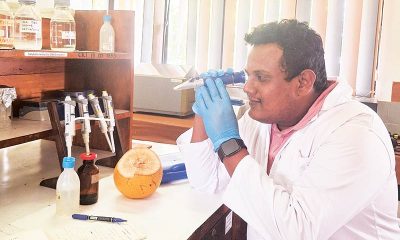
 Life style5 days ago
Life style5 days agoKing of coconuts heads for a golden future
-

 Latest News7 days ago
Latest News7 days agoColombo district preferential votes announced
-

 News4 days ago
News4 days agoNPP appoints two defeated candidates as NL MPs
-

 News6 days ago
News6 days agoPresident warns his party: “We will fail if we view power as an entitlement to do as we please”
-

 News3 days ago
News3 days ago‘Gas Cylinder’ explodes; Ranil flays NDF Secy. for submitting Ravi’s name
-

 Latest News7 days ago
Latest News7 days agoGampaha district: NPP 16, SJB 3
-

 Midweek Review2 days ago
Midweek Review2 days ago‘Ramayanizing’ Sri Lanka by Courtesy of SriLankan Airlines
-

 Sports3 days ago
Sports3 days agoMaking batting compulsory for bowlers has worked – Theekshana



